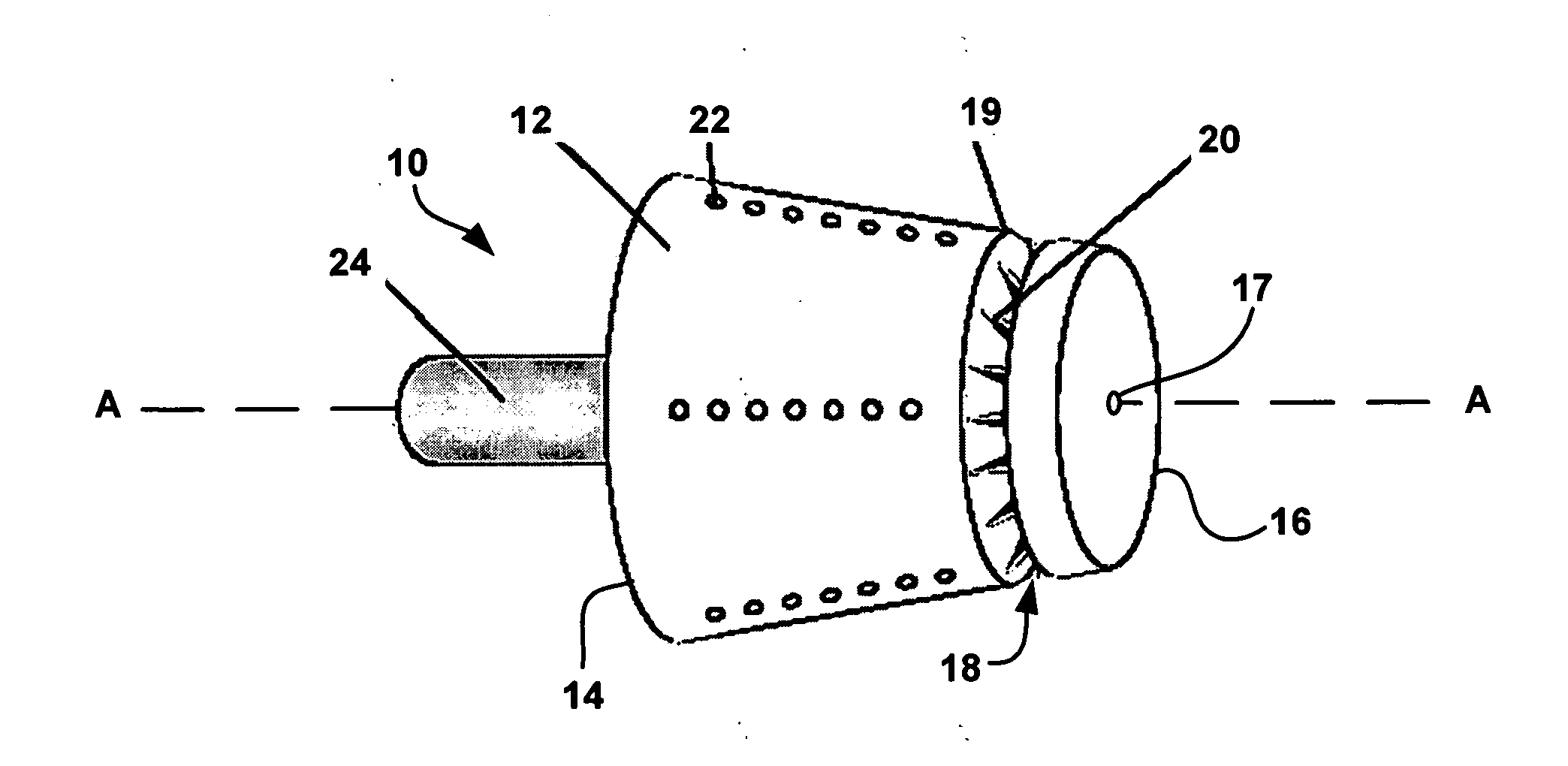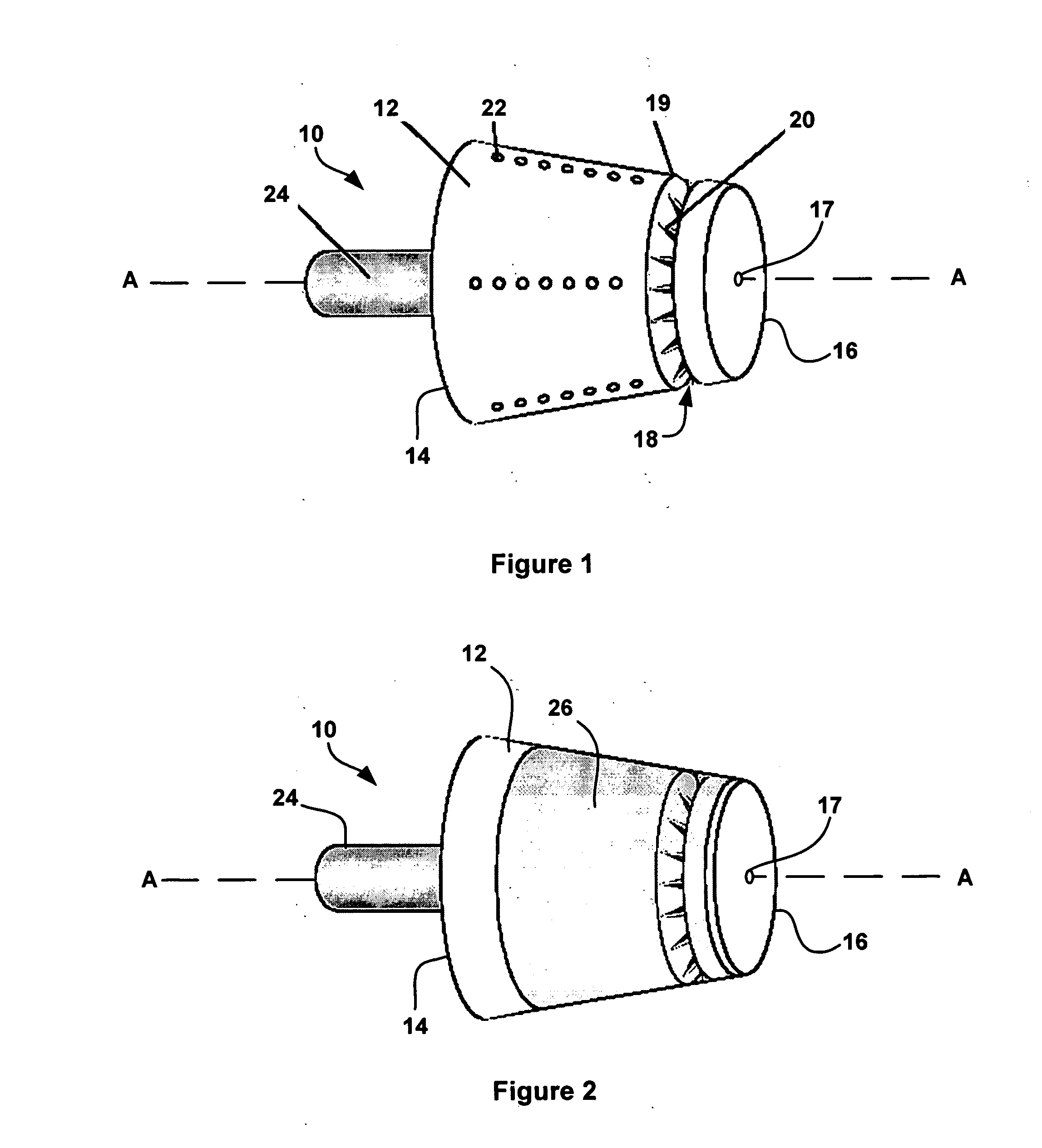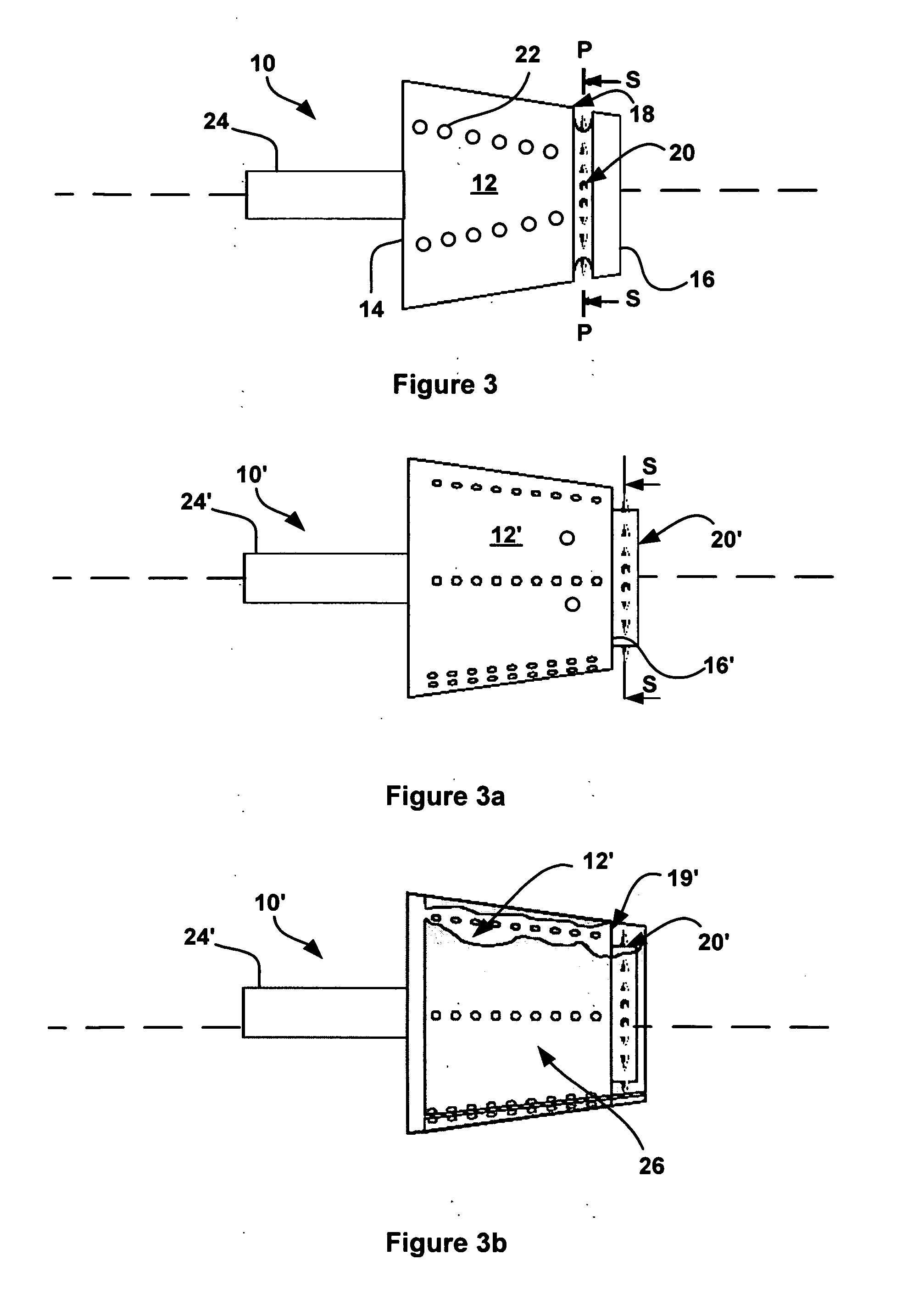Electrostatically applying a label to a mold cavity
a label and mold cavity technology, applied in the direction of chemistry apparatus and processes, glue vessels, lamination ancillary operations, etc., can solve the problems of inability to provide satisfactory labeling in conventional in-mold labeling processes and apparatus, and the difficulty of holding the label in place during injection of plasticized materials, etc., to achieve more reliable and cost-effective effects
- Summary
- Abstract
- Description
- Claims
- Application Information
AI Technical Summary
Benefits of technology
Problems solved by technology
Method used
Image
Examples
Embodiment Construction
[0026]With primary reference to FIG. 1, a first preferred embodiment of the present invention is directed to an electrostatic mandrel 10 capable of positioning a label in a female mold cavity. The mandrel may include a body 12 (that defines an axis A), with a first end 14 and an opposite distal end 16, a set of ionizing electrodes 20, a groove 18 disposed about body 12 and in a plane P (see FIG. 3) that is at least substantially perpendicular to axis A. Mandrel 12 may, optionally, also include an axially aligned guide shaft to facilitate compatibility with conventional in-mold labeling apparatus. In this form of the invention, groove 18 is located near distal end 16 of mandrel 10 and set of ionizing electrodes 20 includes plural ionizing electrodes with ionizing tips positioned within mandrel groove 18 (below the surface of body 12). When an appropriate high voltage is applied to electrode set 20, a substantially uniform ionizing current is emitted from the electrodes 20 in the groo...
PUM
| Property | Measurement | Unit |
|---|---|---|
| Length | aaaaa | aaaaa |
| Length | aaaaa | aaaaa |
| Time | aaaaa | aaaaa |
Abstract
Description
Claims
Application Information
 Login to View More
Login to View More - R&D
- Intellectual Property
- Life Sciences
- Materials
- Tech Scout
- Unparalleled Data Quality
- Higher Quality Content
- 60% Fewer Hallucinations
Browse by: Latest US Patents, China's latest patents, Technical Efficacy Thesaurus, Application Domain, Technology Topic, Popular Technical Reports.
© 2025 PatSnap. All rights reserved.Legal|Privacy policy|Modern Slavery Act Transparency Statement|Sitemap|About US| Contact US: help@patsnap.com



